- ClimateOS Africa.
- Posts
- Issue #19. Africa’s Most Devastating Climate Change-Linked Floods in Recent History.
Issue #19. Africa’s Most Devastating Climate Change-Linked Floods in Recent History.
Floods have become one of the most destructive natural disasters worldwide, with their frequency and severity rising sharply in recent years.
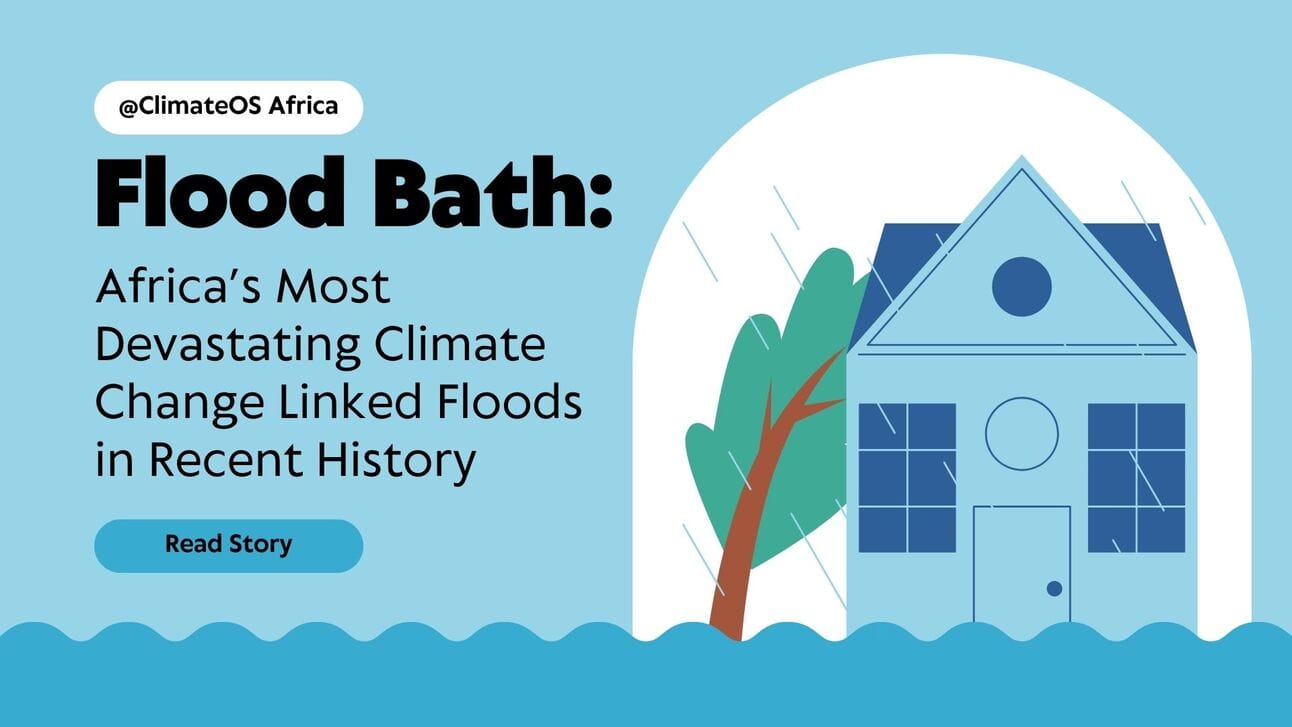
Cover Photo.
Floods have become one of the most destructive natural disasters worldwide, with their frequency and severity rising sharply in recent years. In 2021, catastrophic floods swept through Germany and Belgium, killing over 200 people and causing billions in damage.
The United States has also faced historic flooding, such as the 2022 Kentucky floods that left dozens dead and thousands homeless. While these disasters are devastating, the impact of flooding in Africa is often far more severe, both in terms of human suffering and long-term consequences.
In Africa, floods routinely devastate entire communities, displacing millions and destroying critical infrastructure. In 2024 alone, over 7.5 million people across 18 countries in West and Central Africa were affected, with at least 1,527 lives lost and 1.7 million people forced from their homes.
The destruction is magnified by widespread poverty, weak infrastructure, and limited emergency resources. Floods in Africa not only wash away homes but also ruin vast areas of farmland, (more than 960,000 hectares in 2024 alone) threatening food security for millions.
Schools and health centers are often destroyed, cutting off education and healthcare for the most vulnerable. These impacts are compounded by pre-existing challenges like hunger, malnutrition, and political instability, making recovery slow and difficult.
The surge in flooding is closely linked to climate change. Warmer global temperatures increase the atmosphere’s capacity to hold moisture, leading to heavier and more unpredictable rainfall.
In West and Central Africa,for example, rainfall in major river basins now regularly exceeds historical averages by one or even two standard deviations, overwhelming dams and drainage systems. Without urgent action, such as investing in resilient infrastructure, improving early warning systems, and supporting climate adaptation, these disasters will only grow worse.
If nothing changes, millions more will be pushed into hunger, poverty, and displacement, while the cost of recovery will soar beyond what local and international agencies can bear. The world must act now to curb emissions and help vulnerable regions prepare, or face a future where extreme floods become the new normal.
Here are some of Africa's Most Devastating Climate Change-Linked Floods in Recent History.
2024 West and Central Africa Floods
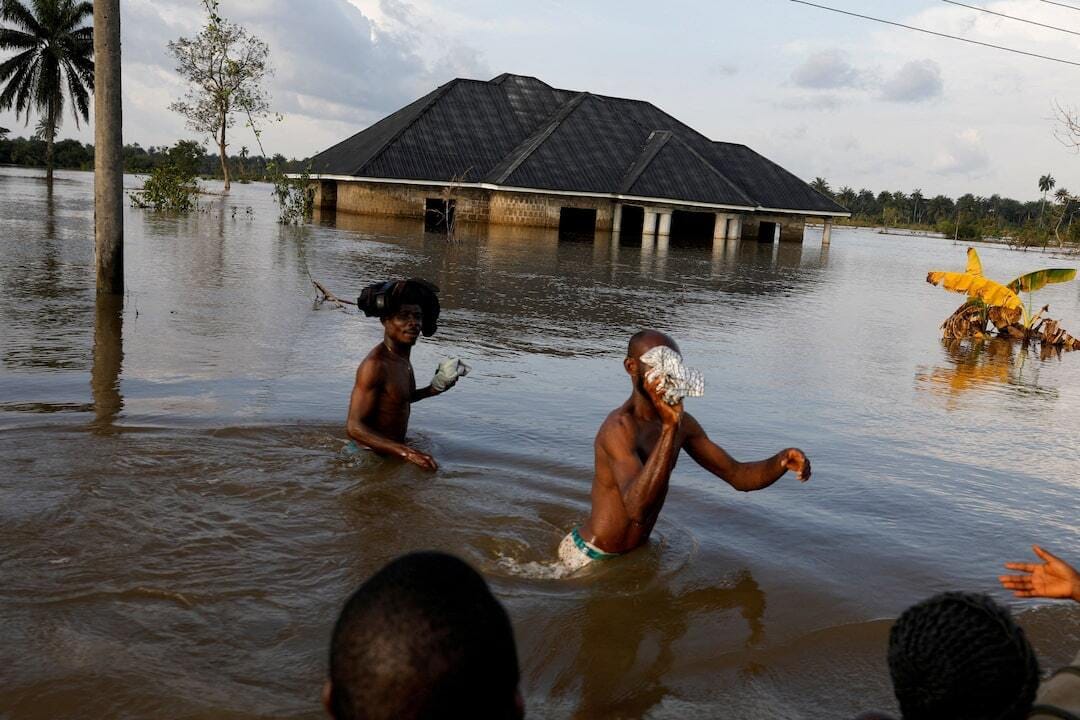
2024 West and Central Africa Floods.
In 2024, West and Central Africa faced one of the worst flooding disasters in decades. The rainy season, which usually brings much-needed water to the region, turned deadly as rainfall levels far exceeded historical averages. By November, over 7.5 million people across 18 countries had been affected, with Chad, Niger, Nigeria, and the Democratic Republic of the Congo among the hardest hit.
Chad alone saw 1.9 million people impacted, Niger 1.5 million, Nigeria 1.3 million, and the DRC 1.2 million. The flooding destroyed or damaged more than 649,000 homes and left 1.7 million people displaced. Tragically, at least 1,527 people lost their lives and nearly 4,500 were injured.
The destruction was widespread. Floodwaters swept away 128,000 heads of cattle and ruined over 960,000 hectares of farmland, threatening food security for millions. Schools and health facilities were not spared, 1,277 schools and 221 health centers were damaged or destroyed, disrupting education and healthcare access for vulnerable populations.
In Senegal, 55,000 people were displaced, and the army was mobilized to evacuate entire villages and livestock along the Senegal River. In Cameroon, particularly in the Far North region, more than 158,000 people were affected, with entire communities inundated and thousands of homes destroyed.
The scale of the disaster was made worse by several factors. Many communities were already struggling with poverty, hunger, and instability. The infrastructure was not built to withstand such extreme weather, and water retention systems failed in places like Mayo Danay, Cameroon.
The floods also came after years of changing weather patterns, with some areas experiencing drought while others faced excessive rainfall—a clear sign of intensifying climate change impacts.
The response involved local and international agencies, with emergency evacuations, temporary shelters, and food aid provided. However, the sheer number of affected people overwhelmed resources.
Schools often doubled as shelters, further disrupting normal life. The aftermath has seen calls for urgent investment in flood prevention and climate adaptation measures. Governments and humanitarian organizations are now focusing on rebuilding infrastructure, improving early warning systems, and enhancing community resilience to future climate shocks.
The disaster has been a wake-up call, highlighting the need for long-term solutions as climate change continues to increase the frequency and severity of such events.
2022 Nigeria Floods
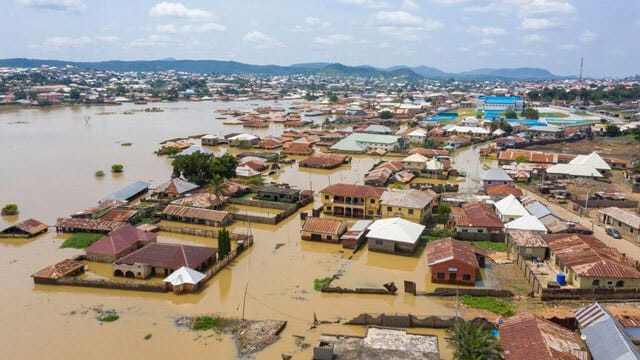
2022 Nigeria Floods.
Nigeria is a country that is extremely prone to floods. In fact, three of the five floods on our list caused great devastation in Nigeria. One of the most devastating ones was in 2022. Nigeria experienced its most devastating floods in over a decade, with the disaster unfolding between May and October. Triggered by exceptionally heavy rainfall, climate change, and the release of water from Cameroon’s Lagdo Dam, the floods swept through all 36 states and the Federal Capital Territory, affecting more than 4.4 million people.
The impact was catastrophic: over 660 people lost their lives, and more than 2.4 million were displaced, with Bayelsa State alone accounting for about half of the displaced population.
The destruction was immense and widespread. Over 340,000 houses were destroyed, and more than 650,000 hectares of farmland were ruined, this at a time when 19.5 million Nigerians were already facing severe food insecurity.
The loss of crops and livestock deepened the hunger crisis, and the contamination of water sources led to a spike in waterborne diseases, including cholera, malaria, and typhoid fever. A severe cholera outbreak killed more than 465 people and affected over 18,000 others in 31 states, with the movement of flood-displaced populations increasing the risk of disease spread.
The response to the disaster was a massive, multi-agency effort. The Nigerian government, through the National Emergency Management Agency (NEMA), coordinated with humanitarian partners, including the United Nations, UNICEF, and the Red Cross, to provide emergency food, water, shelter, and medical supplies.
The UN released $10.5 million from emergency funds to ramp up the response in the worst-hit areas, especially in conflict-affected states in the northeast and in Anambra, Bayelsa, Kogi, and Niger. UNICEF’s integrated response included water, sanitation, health, education, nutrition, and child protection support, with temporary shelters set up in schools and health facilities.
Despite these efforts, the scale of the disaster overwhelmed available resources. Many displaced people had to take refuge in makeshift camps, and the damage to infrastructure delayed the resumption of basic services.
The floods exposed the vulnerability of communities living in flood-prone areas, the lack of adequate drainage and flood defenses, and the challenge of managing water releases from upstream dams.
In the aftermath, attention turned to recovery and future preparedness. Efforts included rehabilitating damaged schools and health centers, providing agricultural support to replace lost seeds and tools, and restoring livelihoods. There were also calls for better early warning systems, improved flood defenses, and stronger disaster risk reduction strategies.
The 2022 floods served as a stark warning of the increasing risks posed by climate change, highlighting the urgent need for long-term investment in resilience and adaptation measures to protect Nigeria’s most vulnerable communities.
2024 Horn of Africa Floods
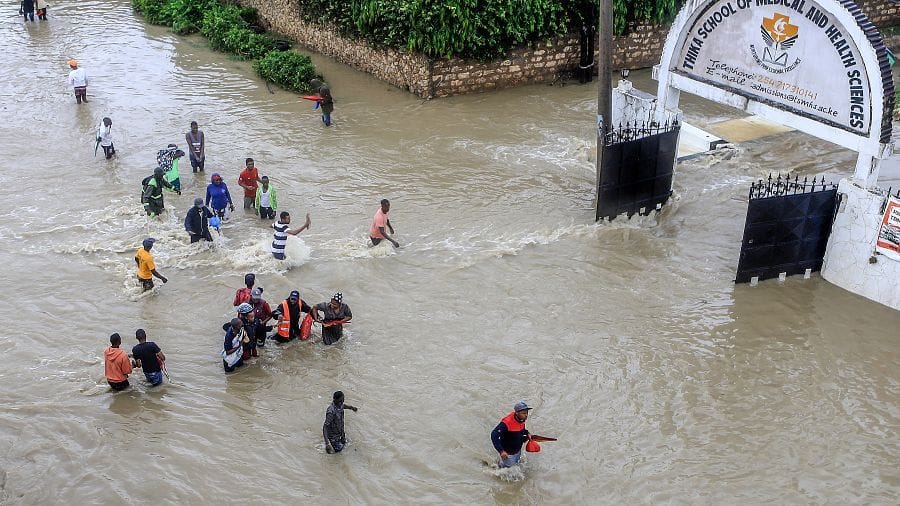
2024 Horn of Africa Floods.
In late 2023 and continuing into 2024, the Horn of Africa, comprising Ethiopia, Kenya, Somalia, and neighboring countries, experienced one of the most severe flooding crises in recent history.
This disaster was triggered by unusually heavy rains linked to the El Niño weather system and exacerbated by climate change, which has increased the frequency of extreme weather events in the region. Between November and December 2023, intense rainfall caused rivers to overflow, dams to collapse, and drainage systems to fail, displacing more than four million people across the Horn.
The floods caused widespread destruction. In Ethiopia alone, over 560,000 people were affected by heavy rains and flooding in multiple regions, including Afar, Amhara, Oromia, and Somali, with more than 95,000 displaced.
Approximately 60,000 hectares of cropland were damaged, and nearly 3,000 livestock died. The flooding also caused outbreaks of cholera and other waterborne diseases, worsened by poor sanitation and limited access to clean water.
In Kenya and Somalia, hundreds of thousands were displaced, with homes, schools, and health facilities destroyed or damaged. For example, in Somalia’s Belet Weyne area, flooding displaced over 42,000 people who had to be evacuated from low-lying flood-prone zones.
The collapse of the Arba’at Dam in Sudan in August 2024 was one of the deadliest incidents, killing over 130 people and displacing thousands. Overall, flooding affected nearly 600,000 people in Sudan, with widespread damage to homes, roads, bridges, and infrastructure. South Sudan also faced expanded flooding, affecting nearly half a million people and worsening the humanitarian situation.
The response involved governments, UN agencies, and humanitarian partners conducting search and rescue operations, providing emergency shelter, food, water, and medical aid. However, the scale of displacement and damage overwhelmed resources. Refugees and internally displaced persons (IDPs) were especially vulnerable, many living in fragile shelters or camps with poor infrastructure. The floods also worsened food insecurity and increased the risk of disease outbreaks, complicating relief efforts.
The massive destruction was due to a combination of factors: the intensity and duration of rainfall far exceeded normal patterns, infrastructure was weak or poorly maintained, and many communities were already vulnerable due to poverty, conflict, and previous droughts. The region’s alternating cycles of drought and flood, intensified by climate change, have made it difficult to build resilience.
In the aftermath, there has been a push to improve early warning systems, flood forecasting, and disaster preparedness. Initiatives like Flood-PROOFS East Africa aim to provide impact-based flood forecasting to better predict and mitigate future floods.
Humanitarian agencies emphasize the need for sustained funding to support recovery, strengthen health services, rebuild infrastructure, and improve water and sanitation. With forecasts predicting above-average rainfall continuing into late 2024, efforts are ongoing to prepare vulnerable communities and reduce the impact of future floods.
This disaster highlights the urgent need for long-term climate adaptation strategies in the Horn of Africa to cope with increasingly extreme weather patterns driven by global warming.
Recurring Sahel Floods (Mali, Niger, Chad, Burkina Faso).
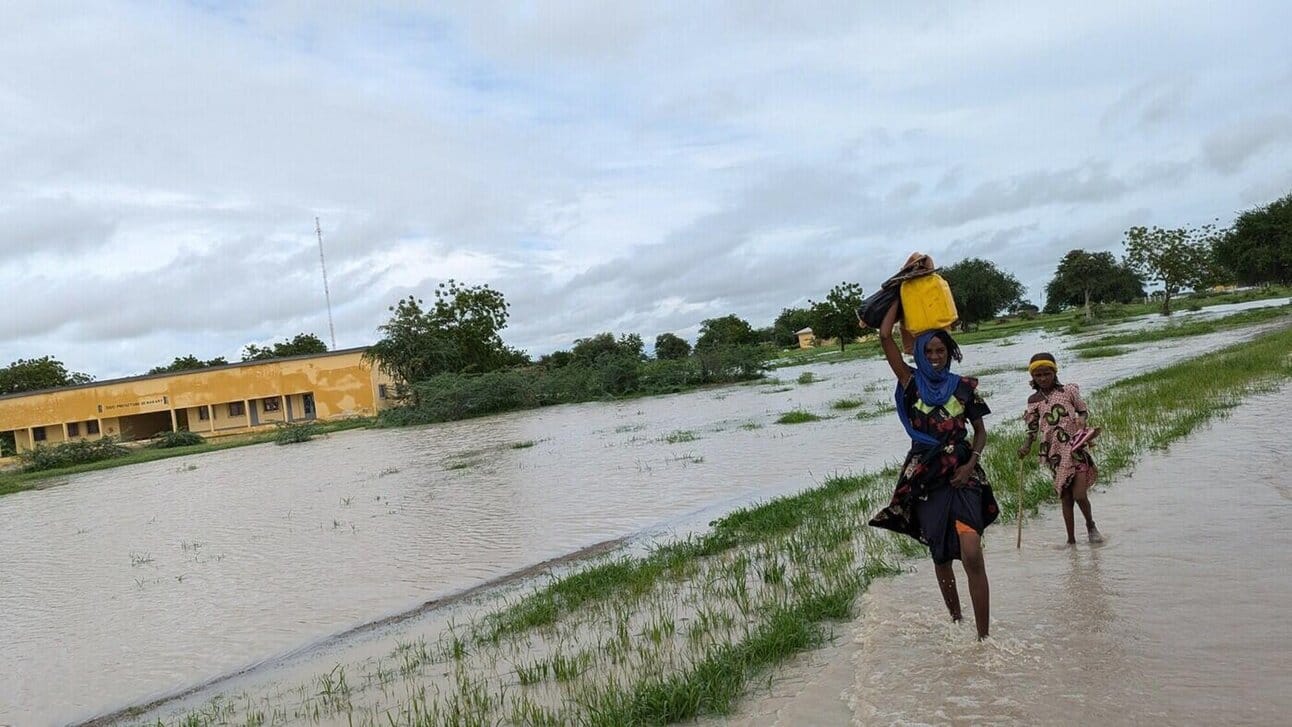
Recurring Sahel Floods
In the Sahel region, recurring floods have become a devastating and frequent reality, deeply impacting millions of people across countries like Mali, Niger, Chad, Burkina Faso, and Nigeria.
Traditionally known for its semi-arid climate and vulnerability to drought, the Sahel is now facing a paradoxical challenge: intense, heavy rainfall events causing catastrophic floods that destroy homes, farmlands, and infrastructure almost every year.
These floods occur mainly during the rainy season, which has become longer and more intense due to climate change. Scientists explain that global warming has increased the atmosphere’s capacity to hold moisture, leading to heavier downpours when it rains.
Since around 2005, rainfall intensity in the Sahel has increased significantly, causing extreme flooding events that were once rare to become more common. This shift has created a double burden for communities already struggling with droughts and desertification.
The floods’ destruction is massive for several reasons. Many Sahelian countries have poor urban planning and inadequate drainage systems, making towns and cities especially vulnerable to flash floods.
In rural areas, floodwaters wash away crops and livestock, threatening food security for millions who rely on subsistence farming and pastoralism. For example, in 2024 alone, over 354,000 hectares of agricultural land were damaged across the region, making large areas unsuitable for farming or grazing.
The floods also damage schools and health facilities, forcing closures and disrupting essential services. Displacement is common, with thousands forced to leave their homes and seek shelter in overcrowded camps or temporary sites.
The humanitarian consequences are severe and compounded by ongoing conflicts, poverty, and political instability. Many flood-affected populations are already vulnerable due to displacement from violence or economic hardship, making it harder for them to recover.
The floods also increase the risk of waterborne diseases and malnutrition, worsening the health crisis in the region.
Responses to these recurring floods involve local governments, humanitarian agencies, and international partners working to provide emergency aid such as food, shelter, clean water, and medical care.
However, resources are often stretched thin. In 2024, the Humanitarian Response Plan for the Sahel was only 25% funded halfway through the year, limiting the ability to meet all urgent needs.
Efforts are underway to improve early warning systems and disaster preparedness, but challenges remain due to weak infrastructure, limited coordination between countries sharing river basins, and the scale of displacement caused by conflict and climate shocks.
In the aftermath of each flood, there is a growing recognition of the need for long-term solutions. These include investing in resilient infrastructure, better water management, sustainable land use practices, and community-based disaster risk reduction.
The Sahel Alliance and other initiatives are supporting projects aimed at adapting to climate change and reducing vulnerability. However, without significant increases in funding and political stability, the cycle of floods and suffering is likely to continue.
Overall, the recurring floods in the Sahel are a clear example of how climate change is intensifying extreme weather events, hitting some of the world’s most fragile and vulnerable communities hardest. The combination of environmental, social, and political factors makes these floods particularly devastating, requiring urgent and sustained action to protect lives and livelihoods.
2024 Maiduguri, Nigeria Flash Floods.
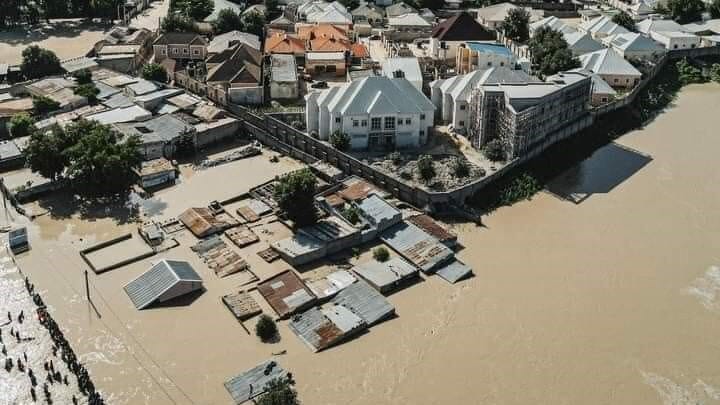
2024 Maiduguri Floods
In September 2024, Maiduguri in Borno State, Nigeria, experienced severe flooding caused by the collapse of the Alau Dam, which was overwhelmed by heavy rainfall. The dam, located about 20 kilometers south of Maiduguri, had been under stress due to intense rains in late August and early September. Despite inspections indicating safety, the dam cracked and collapsed on September 9, unleashing a massive flood that inundated nearly half of Maiduguri within hours.
The flooding displaced over 414,000 people and affected more than one million residents across Borno State. At least 37 people died, and over 58 were injured. The floodwaters destroyed homes, bridges, markets, schools, and healthcare facilities, severely disrupting daily life and access to essential services.
Key areas such as Gwange, Bama Road, Maiduguri Zoo, and the main market were submerged, forcing thousands to evacuate to temporary shelters or IDP camps. The flood also increased health risks, with waterborne diseases like cholera spreading rapidly due to contaminated water and poor sanitation.
The response involved government agencies and humanitarian organizations. The Danish Refugee Council (DRC) provided hygiene kits, including soap, sanitary pads, buckets, and water purification tablets, to affected families in camps.
Humanitarian agencies also set up emergency health services, distributed food, and provided shelter support. A high-level delegation visited Maiduguri to show solidarity and coordinate ongoing relief efforts.
The destruction was massive because the dam’s failure released a huge volume of water into a densely populated city with vulnerable infrastructure.
The floodwaters damaged homes, roads, and vital facilities, and the displacement created a humanitarian crisis. The flooding was worsened by the heavy rains, the dam’s structural damage, and the city’s inadequate drainage systems. The aftermath has underscored the need for better dam maintenance, early warning systems, and flood preparedness to prevent future disasters.
Efforts continue to help displaced families recover and rebuild, but the threat of further flooding remains as heavy rains persist.